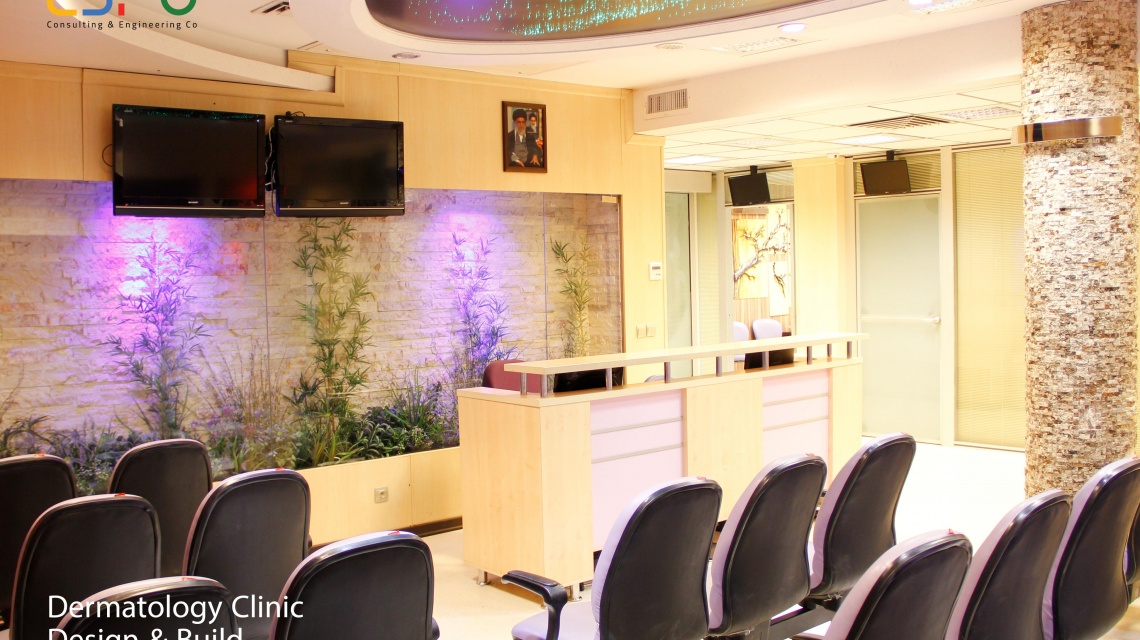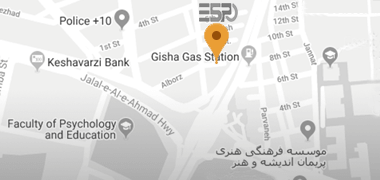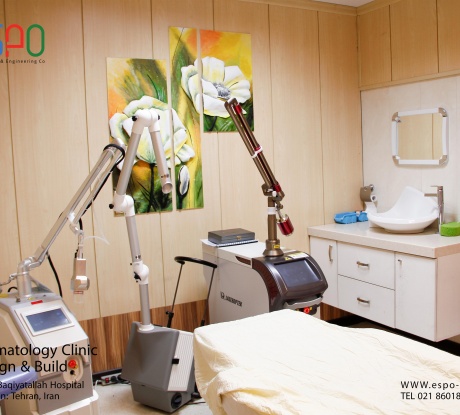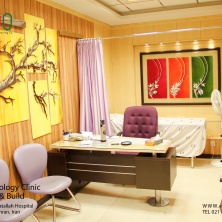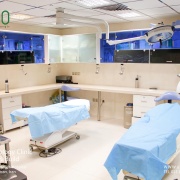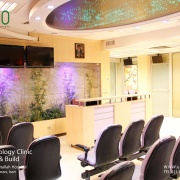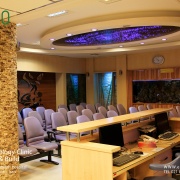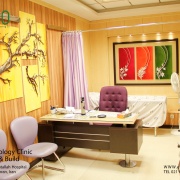
در طراحی و اجرای دکوراسیون داخلی، بهعنوان یکی از مراکز تخصصی و حرفهای در زمینه زیبایی و درمانهای پوستی، رعایت استانداردها و الزامات طراحی فضاهای درمانی و همزمان ایجاد محیطی آرامشبخش برای مراجعین از اهمیت ویژهای برخوردار است. هدف اصلی این طراحی، ایجاد فضایی است که هم از لحاظ عملکردی و بهداشتی و هم از نظر بصری، بهترین تجربه را برای بیماران و کادر درمانی فراهم کند.
نکات و الزامات طراحی این فضا:
1. استفاده از متریالهای باکیفیت و قابل شستشو • کفپوشها و دیوارپوشها در کلینیک پوست و مو باید از جنسهای ضدعفونیپذیر و مقاوم در برابر رطوبت و مواد شیمیایی باشند. در این پروژه، از کفپوشهای یکپارچه و بدون درز استفاده شده که علاوه بر زیبایی، بهداشتی بوده و بهراحتی قابل شستشو هستند. این متریالها باید از تجمع آلودگی جلوگیری کرده و به پاکیزگی محیط کمک کنند.
2. نورپردازی مناسب و کنترلشده • نورپردازی یکی از مهمترین عناصر در کلینیک پوست و مو است. نور طبیعی به ایجاد حس آرامش کمک میکند و همچنین برای تشخیص مشکلات پوستی، اهمیت دارد. در طراحی این کلینیک، پنجرههای بزرگ و استفاده از نورپردازی مصنوعی با رنگهای گرم و ملایم در کنار نورهای سفید و کاربردی، فضای مطبها و اتاقهای درمانی را تکمیل کرده است. همچنین از لامپهای LED با قابلیت تنظیم نور برای جلوگیری از خستگی چشمها و ایجاد حس راحتی استفاده شده است.
3. ایجاد فضای انتظار جذاب و آرامشبخش • فضای انتظار باید بهگونهای طراحی شود که از استرس مراجعین کاسته و فضایی دلپذیر ایجاد کند. در کلینیک پوست و مو بیمارستان بقیهالله، برای کاهش بار روانی انتظار، از دکوراسیون مدرن و جذاب استفاده شده است. بین صندلیهای انتظار، آکواریومهای زیبا بهصورت دکور قرار داده شده که با حرکات آب و ماهیها حس آرامش و طبیعت را به فضا میآورد. همچنین استفاده از گیاهان مصنوعی برای زیباسازی فضا و ایجاد محیطی دلنشین در نظر گرفته شده است.
4. تقسیمبندی فضاها بهصورت بهینه • طراحی فضاهای درمانی به گونهای انجام شده که اتاقهای مشاوره، اتاقهای درمانی و فضاهای مراقبتی بهخوبی از یکدیگر جدا شدهاند تا حریم خصوصی مراجعین حفظ شود و گردش کاری کارکنان بهینهسازی گردد. این تقسیمبندی همچنین به بهبود جریان کار در کلینیک و کاهش تداخل بین فضاهای مختلف کمک میکند.
5. کنترل عفونت و رعایت استانداردهای بهداشتی • یکی از مهمترین الزامات در طراحی کلینیکهای پوست و مو، کنترل دقیق عفونت و جلوگیری از انتقال آلودگی است. سیستمهای تهویه مطبوع با فیلترهای مخصوص برای پاکسازی هوا و جلوگیری از انتشار آلودگیها در این کلینیک نصب شده است. همچنین از موادی در طراحی دیوارها و سطوح استفاده شده که قابلیت تمیز کردن و ضدعفونی سریع را داشته باشند.
6. طراحی اتاقهای خاص برای بیماران با نیازهای ویژه • برای بیمارانی که نیاز به درمانهای خاص یا مشکلاتی مانند بیاختیاری کنترل عفونتهای پوستی دارند، اتاقهایی با طراحی ویژه در نظر گرفته شده است. این اتاقها با متریالهایی طراحی شدهاند که از انتشار بو و آلودگی جلوگیری کرده و بهراحتی قابل تمیز کردن و ضدعفونی هستند. همچنین، تجهیزات تهویه و فیلتراسیون هوای خاص برای جلوگیری از انتشار آلودگی در این اتاقها نصب شده است.
7. سقف و دکوراسیون خاص فضا • برای ایجاد حس جذابیت و شکوه، سقفهای کلینیک بهصورت منحنی و مدرن طراحی شدهاند و از نور مخفی در این فضاها استفاده شده است. این طراحی به کاهش استرس بیماران و ایجاد فضایی آرام و لوکس کمک میکند. همچنین رنگهای استفاده شده در دکوراسیون دیوارها و مبلمان، ترکیبی از رنگهای ملایم و خنثی هستند که احساس آرامش و حرفهای بودن را به مخاطب القا میکنند.
جمعبندی در طراحی و دکوراسیون داخلی کلینیک پوست و مو بیمارستان بقیهالله، تمامی جنبههای فنی، بهداشتی و روانشناختی با دقت مد نظر قرار گرفتهاند. ایجاد فضایی ارامش بخش، رعایت استانداردهای کنترل عفونت و استفاده از متریال های با کیفیت و مقاوم برای بهره برداری مدت دار، کلینیکی مدرن و مجهز را به وجود آورده است. این فضا علاوه بر تامین نیازهای عملی و تخصصی درمان، به گونه ای طراحی شده است که حس آرامش و راحتی را برای بیماران و کادر درمان فراهم کند.
